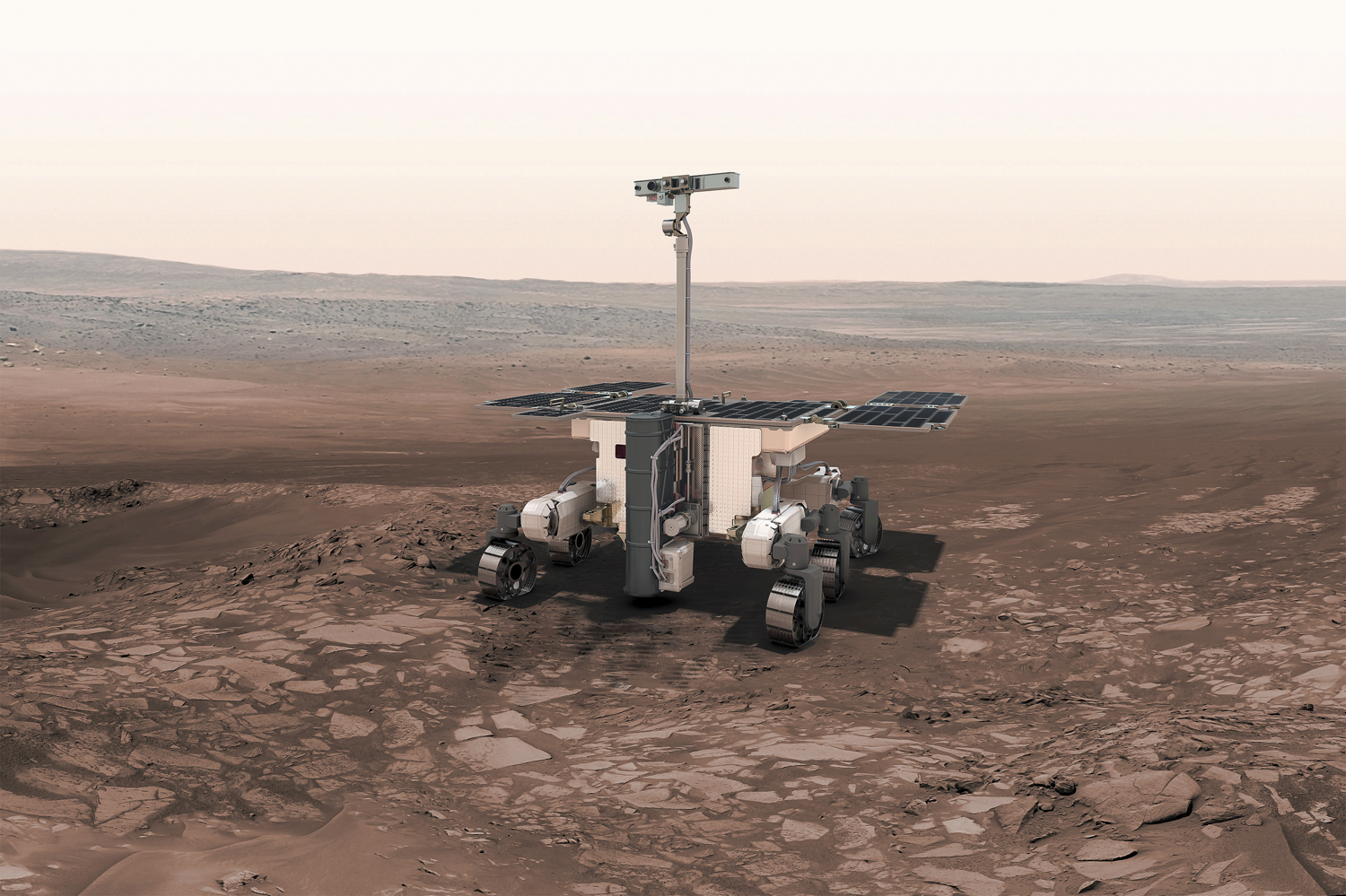
One major challenge of sending exploratory missions to Mars is landing heavy items like rovers safely on the planet’s surface. The European Space Agency’s upcoming ExoMars mission will need a descent module containing a rover to slow from 13,000 miles per hour as it enters to planet’s atmosphere to a gentle landing pace in just six minutes.
To do this, the module is equipped with a dual parachute system, in which two parachutes each have their own pilot chute and are deployed separately. The main parachute is 15 meters wide and is deployed while the module is traveling faster than the speed of sound. Once it has slowed the module, the first stage main parachute is jettisoned and the second main parachute is deployed. With a diameter of 35 meters (115 feet), the second parachute will be the largest ever deployed on Mars.
Of course, complex systems like the parachute deployment need to be thoroughly tested before they are ready to be used on an alien planet. In a round of testing earlier this year, problems with the parachute bags led to damage to the parachute canopies from friction as they deployed.
Now, the ESA has fixed that issue and has tested out the system with new parachute bags. Using equipment from NASA’s Jet Propulsion Laboratory, the ESA was able to test the parachute deployment on the ground.
You can see the parachute extraction tests in action in the video below. The tests were performed “using a NASA/JPL test rig powered by compressed air,” according to the ESA. “The lid of the parachute assembly is pulled along a suspended cable at high speed while the end of the assembly is fixed to a wall. When the release mechanism is activated, the parachute bag is pulled away from the parachute at the target speed, mimicking the extraction as it will be on Mars. At the highest speeds, the tests enable the extraction to take place at more than 200 km/h (125 mph).”
With these preliminary tests complete, the ExoMars team will now perform more high-speed tests before testing the parachutes in action with two high-altitude drop tests in February and March next year. While this is happening, the rover will also be undergoing environmental testing before being linked to the spacecraft which will carry it to Mars.
If all goes well, the ExoMars project will pass its review in April and be ready for launch between July 26 and August 11, 2020.
Editors' Recommendations
- European Space Agency suspends joint Mars mission with Russia
- China’s Zhurong rover visits its parachute and backshell on Mars
- China’s Zhurong rover beams back its first Mars images
- Watch Perseverance rover pulling its first moves on Mars
- Revealed! The secret message on Perseverance rover’s Mars parachute




